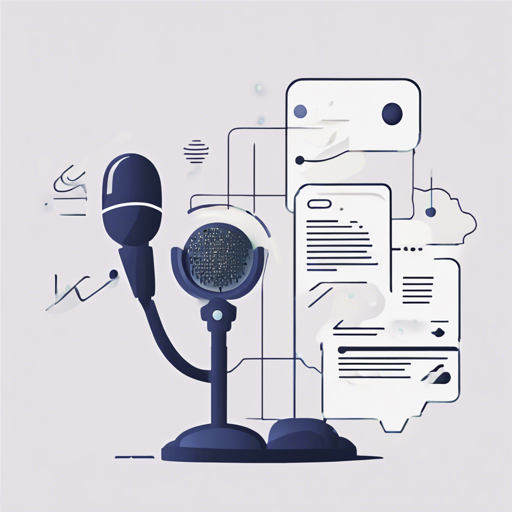Welcome to the world of Automatic Speech Recognition (ASR), where technology is revolutionizing how we interact with audio content. One of the most powerful tools available today is Whisper, a cutting-edge model developed by OpenAI. In this blog, we’ll take a closer look at how to effectively use Whisper and troubleshoot common issues.
What is Whisper?
Whisper is a state-of-the-art ASR model trained on a massive dataset of 5 million hours of labeled audio. It excels in various languages, allowing for seamless transcription and translation capabilities. Think of Whisper as a skilled translator and note-taker, capable of converting spoken words into text with impressive accuracy.
How to Use Whisper
Let’s get started with the basics of implementing Whisper! Here’s a step-by-step guide:
Step 1: Install the Necessary Libraries
Before using Whisper, you’ll need to install the Transformers, Datasets, and Accelerate libraries. Open your terminal and execute the following commands:
pip install --upgrade pip
pip install --upgrade transformers datasets accelerateStep 2: Import Libraries and Load the Model
In your Python script, import the necessary libraries and load the Whisper model. This is where the magic begins!
import torch
from transformers import AutoModelForSpeechSeq2Seq, AutoProcessor, pipeline
from datasets import load_dataset
device = "cuda:0" if torch.cuda.is_available() else "cpu"
torch_dtype = torch.float16 if torch.cuda.is_available() else torch.float32
model_id = "openai/whisper-large-v3-turbo"
model = AutoModelForSpeechSeq2Seq.from_pretrained(model_id, torch_dtype=torch_dtype)
model.to(device)
processor = AutoProcessor.from_pretrained(model_id)
pipe = pipeline("automatic-speech-recognition", model=model, tokenizer=processor.tokenizer, feature_extractor=processor.feature_extractor)
Step 3: Transcribe Audio
You can now transcribe audio files! Use the following code snippet to transcribe an audio file:
dataset = load_dataset("hf-internal-testing/librispeech_asr_dummy", split="validation")
sample = dataset[0]["audio"]
result = pipe(sample)
print(result["text"])
This code downloads a sample from the LibriSpeech dataset and prints the transcribed text.
Step 4: Transcribe Local Audio Files
To transcribe local audio files, simply pass the path of your audio file as follows:
result = pipe("audio.mp3")
Multiple audio files can also be transcribed in parallel!
result = pipe(["audio_1.mp3", "audio_2.mp3"], batch_size=2)
Understanding the Code: A Cooking Analogy
Using Whisper can be likened to preparing a gourmet dish. Here’s how:
- Gathering Your Ingredients: Installing the required libraries is like having all the ingredients ready for your dish. You cannot start cooking without having everything at hand.
- Preparing the Base: Importing the libraries and loading your model represents preparing your kitchen and equipment. You’re making sure everything is set up for cooking!
- Cooking the Meal: Transcribing audio files is like cooking the dish. You put your prepared ingredients (audio files) into the pot (pipeline) to create something delicious (transcribed text).
- Tasting Your Creation: Finally, running the output shows you the results of your cooking, allowing you to enjoy and share your culinary masterpiece with others.
Troubleshooting Common Issues
As with any technology, challenges may arise. Here are some troubleshooting tips:
- Issue: Model fails to load or throws errors about missing dependencies.
- Solution: Ensure that all libraries are correctly installed and that your Python is up to date.
- Issue: Low transcription quality or errors in transcribed text.
- Solution: Check the quality of the audio file. Clear audio with minimal background noise yields the best results.
- Issue: Model runs slowly when transcribing long audio files.
- Solution: Consider using the chunked or sequential algorithms to improve efficiency, depending on your needs.
For more insights, updates, or to collaborate on AI development projects, stay connected with fxis.ai.
Final Thoughts
At fxis.ai, we believe that such advancements are crucial for the future of AI, as they enable more comprehensive and effective solutions. Our team is continually exploring new methodologies to push the envelope in artificial intelligence, ensuring that our clients benefit from the latest technological innovations.

